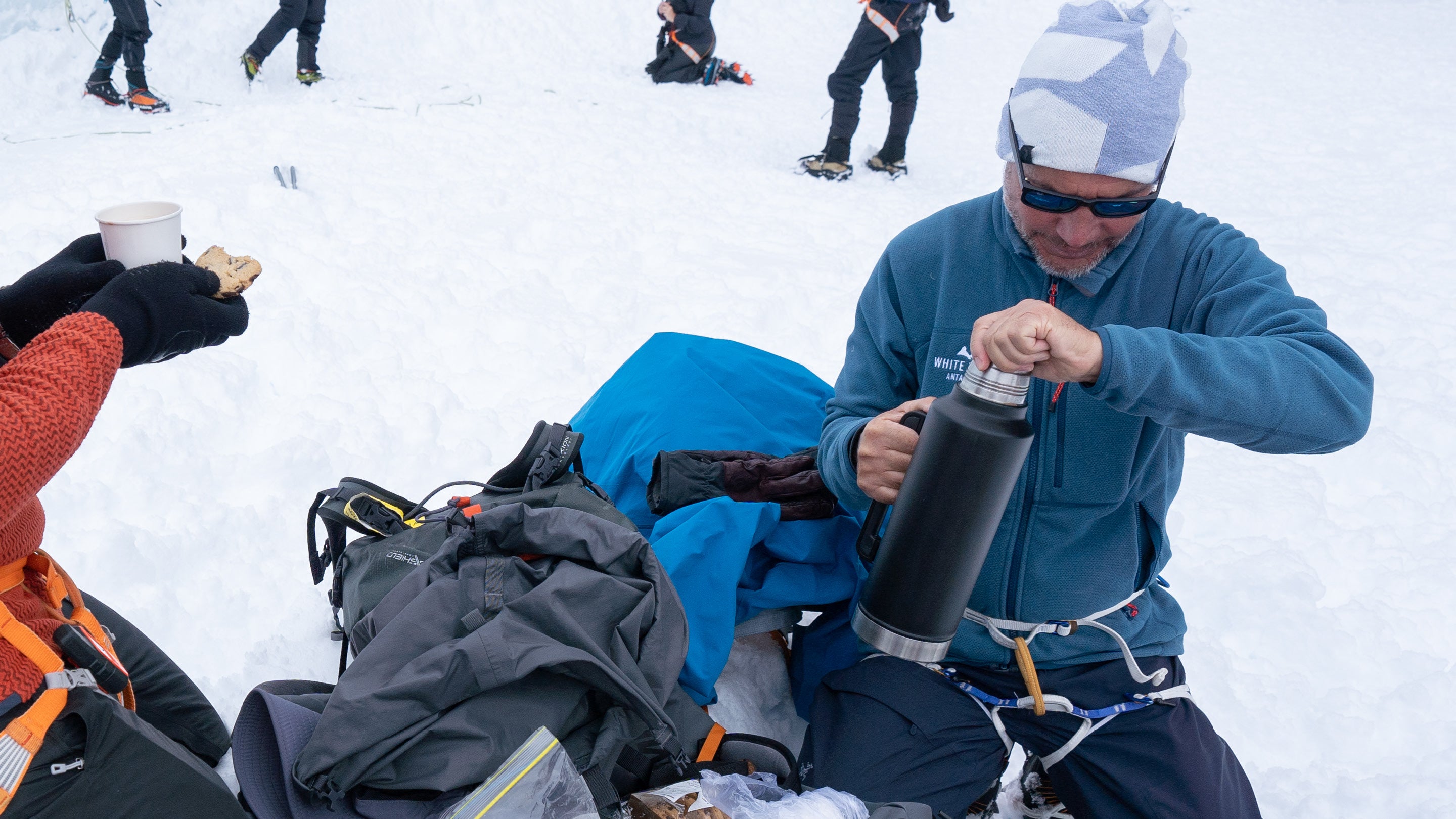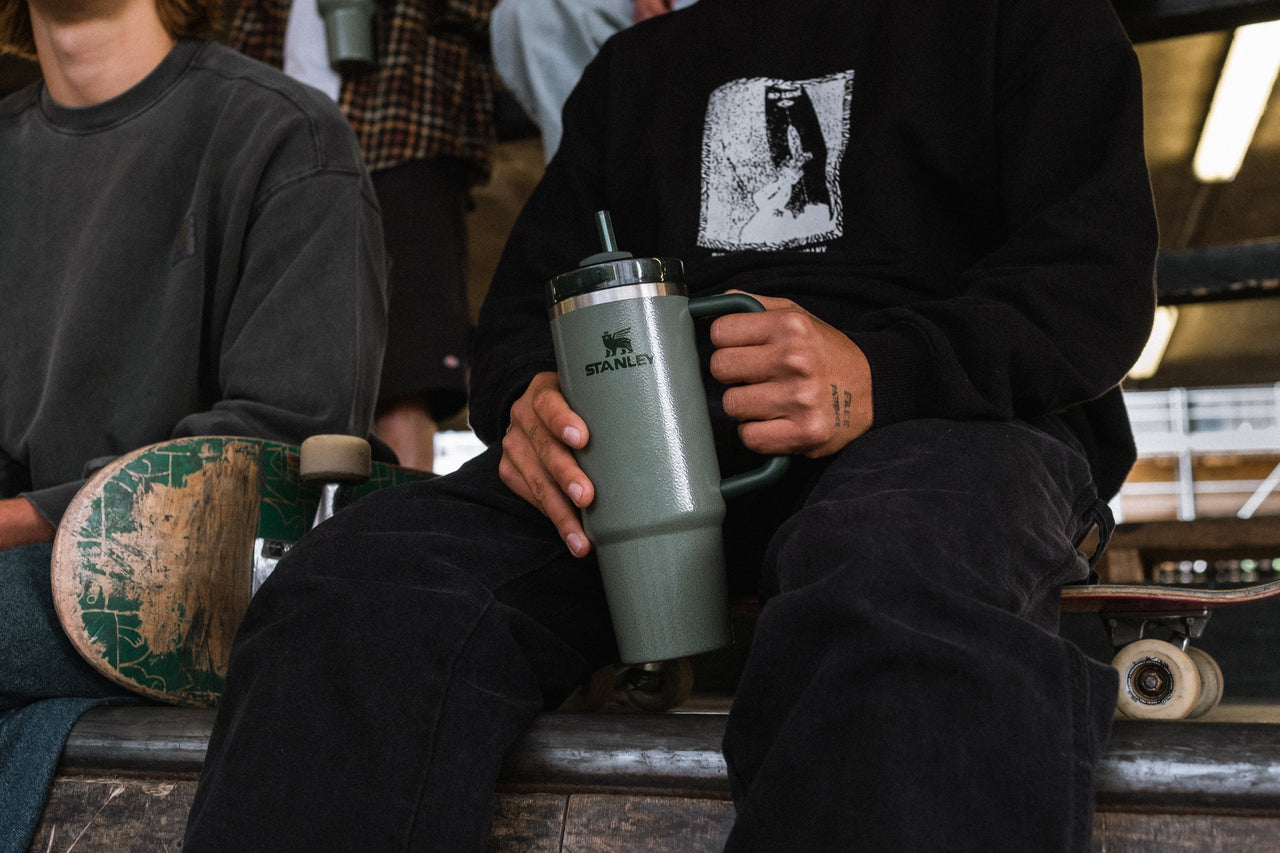It’s no secret that Stanley gear is made to last—and it’s not unheard of to see a Stanley flask still keeping coffee warm 50 years after it rolled out the factory. With that in mind, our new series Stanleys in the Wild tells the stories of your indestructible Stanleys—the places they’ve been and the things they’ve seen.
This time around we’re heading down to the end of the earth with the crew at White Desert—a unique tour operator which takes people right into the heart of Antarctica. Dealing with temperatures as low as -25°C, it’s safe to say this lot know the importance of a good hot drink, and they regularly rely on our gear during their treks onto the planet’s least-populated continent.
To find out more about life (and beverages) in Antarctica, we talked to White Desert’s very own Mindy Roberts…

I know the White Desert team uses a lot of Stanley gear for expeditions. What bits do you use?
The Stanley Classic Legendary Bottles, Travel Mugs and Food Jars are our most reliable gear for keeping drinks and food warm whilst in below zero temperatures. When exploring Antarctica, which is the coldest, driest and windiest continent, it’s very easy to spend hours exploring the landscape. Stanley ensures our guests and guides have easy access to warm soup, hot coffee or cold water to rehydrate in the great outdoors or when relaxing in their pods.
How important is it to have good quality, functional kit when you’re somewhere like Antarctica?
Once you are in an area as remote as Antarctica, your equipment becomes critical to your comfort, survival and ability to perform certain activities. The quality of equipment is not to be underestimated, it’s critical.
What’s the reality of life in Antarctica? What’s a normal day like down there in winter?
We only operate in the Antarctic summer. This is from mid November to early February each season. At this time of the year it’s 24 hours of daylight which can take some getting used to! During winter in Antarctica there is constant darkness and temperatures can easily plummet to -50°C. Typically, the only humans who overwinter are scientists who reside at their national research bases.
During our season, guests can experience days with crystal clear blue skies, brilliant sunshine and ‘mild’ temperatures of around -5°C-10°C, which is surprisingly temperate for the Queen Maud Land region. However, the weather can change rapidly, bringing high winds, white-out conditions and stormy skies. Antarctica is an unpredictable wilderness—a place of unimaginable beauty and dramatic extremes. And whilst we’ve taken the hardship out of exploring, it’s still the most remote continent on Earth!

How cold can it actually get there? I can sort of get my head around the numbers, but what do temperatures as low as -30 celsius actually feel like?
We don’t normally have such low temperatures around our camps. This level of cold would be felt at the South Pole where we spend around 1-2 hours only. Stepping into temperatures of -25°C or lower is an assault on one’s senses – the bracing air infiltrates your lungs with an intensity like no other feeling. Couple those temperatures with the wind-chill factor and the effects are literally mind (and body) numbing.
What else do you have to contend with down there? How does hiking in Antarctica differ from hiking in Britain for example?
Hiking in Antarctica can be anything from a gentle walk to a nearby nunatak or an extreme adventure that cannot be experienced anywhere else on the planet. Spires of rock jutting out of the Earth kilometres high, surrounded by vast white sheets of glacial ice, make you feel like you’re on another planet.
Traversing the terrain here can encompass anything from rope-walks via ferrata; crossing an ancient glacier by foot; abseiling; ice-climbing to rock-climbing a mountain peak with our award-winning High Mountain guides. There is so much to do that you’ll never get bored and everyday you’ll pinch yourself and think, “I’m actually in Antarctica”.
This might be a bit of a naive question, but what’s the situation with people in Antarctica? Can anyone go there?
Antarctica has no indigenous population or permanent residents. There are a small group of scientists and researchers who spend long periods on the continent throughout the year, dedicating their studies to vital climate change studies for National Antarctic Programmes. There is no single country that owns Antarctica. Instead, Antarctica is governed by a group of nations in a unique international partnership.
The Antarctic Treaty, first signed on December 1, 1959, designates Antarctica as a continent devoted to peace and science. There are also very few tourism operations given the difficulty of operating on this vast uninhabited Continent.
We are the only luxury operator in the interior of Antarctica and our hope is to create Antarctic Ambassadors from our client base, not only for the good of the Continent but also of the planet. Our clients are in positions to affect change and influence policy and an Antarctic trip is truly transformative.
It sounds it. Last question to round this off… what’s your favourite hot drink for an Antarctic expedition?
You can’t beat a classic hot chocolate to warm your insides while enjoying the bracing environment on ice. For some, this can be laced with a dram of Lagavulin, Amarula or any vice of choice!

Back to MY STANLEY



